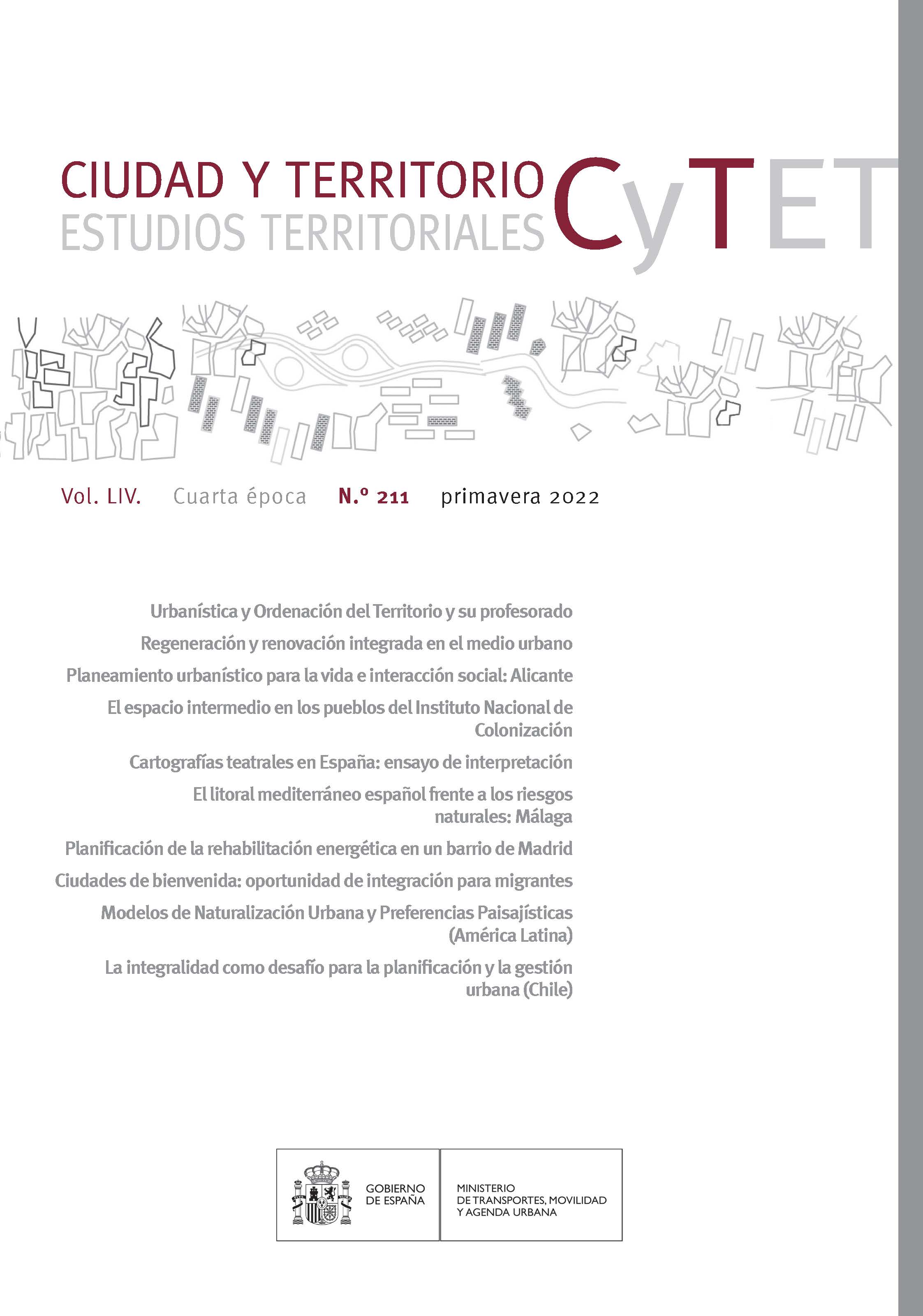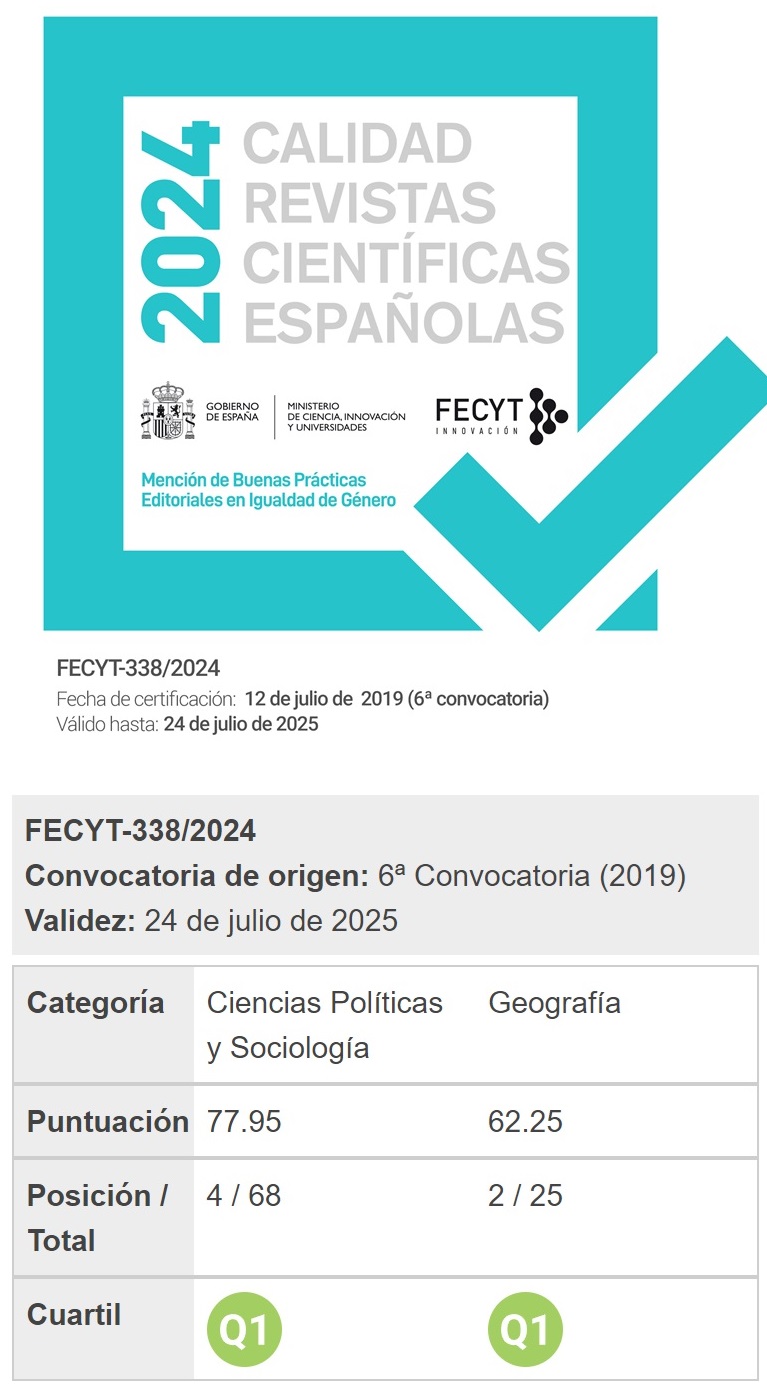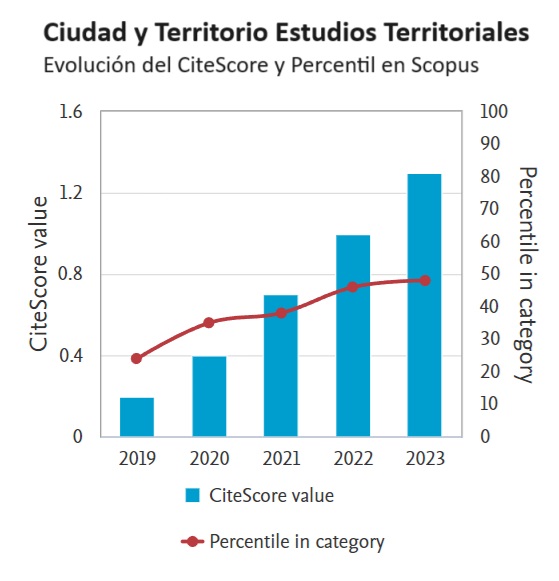Ciudades de bienvenida: áreas de oportunidad y factores críticos de integración para migrantes
DOI:
https://doi.org/10.37230/CyTET.2022.211.8Palabras clave:
Ciudades de bienvenida, Áreas de oportunidad, Integración de migrantes, Obsolescencia urbana, InnovaciónResumen
Las ciudades absorben principalmente los flujos migratorios, cada vez más permanentes y en aumento. ¿Existen ciudades o áreas urbanas óptimas para acoger a los migrantes, que a la vez que se benefician de su llegada, les facilitan la integración? Se plantean como “áreas de oportunidad” las ciudades en decrecimiento y las zonas urbanas obsoletas, y se analiza la repercusión espacial de la integración de migrantes en ellas, en la ciudad menguante de Detroit y en los tejidos industriales obsoletos de Nueva York. ¿Cuáles son los factores críticos para conseguir la integración de migrantes en las ciudades? Estos se extraen de estudiar las estrategias de integración de refugiados en Europa en 2015 en los Países Bajos y en Alemania y sus principales ciudades. Es posible concluir que la migración es un recurso de desarrollo urbano que requiere de vivienda y trabajo disponible, y por tanto de innovación.
Descargas
Publicado
Cómo citar
Número
Sección
Licencia
Derechos de autor 2021 Juana Canet Rosselló

Esta obra está bajo una licencia internacional Creative Commons Atribución-NoComercial-SinDerivadas 4.0.
Sin perjuicio de lo dispuesto en la legislación vigente sobre Propiedad Intelectual, y conforme a la misma, el/la los/las autor/a/es/as que publiquen en CyTET cede/n a título gratuito, de modo no exclusivo y sin límite temporal al Ministerio de Transportes, Movilidad y Agenda Urbana los derechos para difundir, reproducir, comunicar y distribuir en cualquier formato actual o futuro, en papel o electrónico, la versión original o derivada de su obra bajo licencia de Creative Commons Reconocimiento-NoComercial-SinObraDerivada 4.0 Internacional (CC BY-NC-ND 4.0), así como para incluir o ceder a terceros la inclusión de su contenido en índices, repositorios y bases de datos nacionales e internacionales, con referencia y reconocimiento en todo caso de la autoría del mismo.
Además, al realizar el envío, el/la los/las autor/a/es/as declara/n que se trata de un trabajo original en el que se reconocen las fuentes que han sido utilizadas en su estudio, comprometiéndose a respetar la evidencia científica y a no modificar los datos originales para verificar o refutar una hipótesis de partida; que el contenido esencial del mismo no ha sido publicado previamente ni se publicará en ninguna otra obra o revista mientras esté en proceso de evaluación en la revista CyTET; y que no se ha remitido simultáneamente a otra publicación.
Los autores deben firmar un Formulario de Cesión de Derechos, que les será enviado desde la Secretaría de CyTET una vez se acepte su artículo para ser publicado.
Con el objetivo de favorecer la difusión del conocimiento, CyTET se adhiere al movimiento de revistas de Open Access (OA) y entrega la totalidad de sus contenidos a diversos índices, repositorios y bases de datos nacionales e internacionales bajo este protocolo; por tanto, la remisión de un trabajo para ser publicado en la revista presupone la aceptación explícita por parte del autor/a de este método de distribución.
Se anima a las/os autoras/es a reproducir y alojar sus trabajos publicados en CyTET en repositorios institucionales, páginas web, etc. con la intención de contribuir a la mejora de la transferencia del conocimiento y de la citación de dichos trabajos.








 Enlace a CyTET en Linkedin
Enlace a CyTET en Linkedin